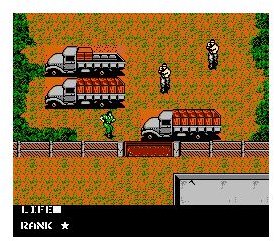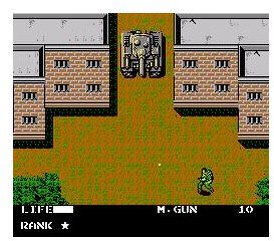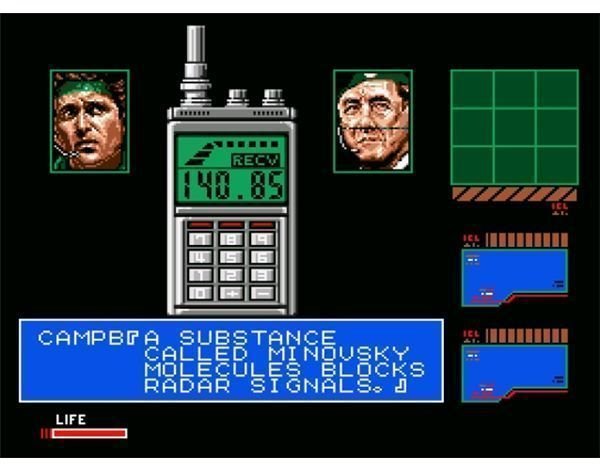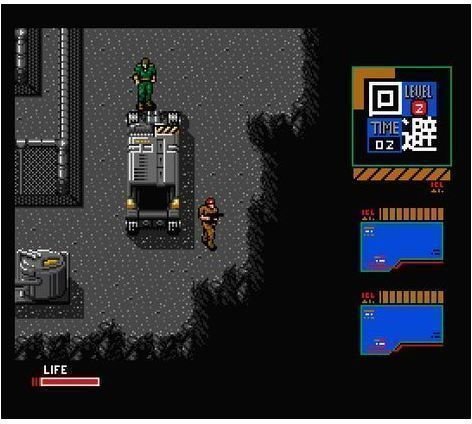Metal Gear NES Release Retrospective

Metal Gear Retrospective #01
Its been over twenty years since the initial release of Metal Gear (NES and MSX2 being the platforms) and the supposed progenitor of the stealth-action sub genre has had a gloried history involving many spin-offs, core series titles and handheld redesigns. This is the beginning of a Metal Gear retrospective article series, chronicling the main franchise releases, while detailing what made them so revolutionary or fondly remembered by the gaming consciousness. First up we’ll be focusing on the games that begin the journey, for creator Hideo Kojima & fans alike, by looking at both Metal Gear (NES port & MSX2 release) and Metal Gear 2: Solid Snake.
Metal Gear (NES & MSX2) - Where It All Began
Metal Gear, the eponymous first chapter in this series history, was released in 1987 for both MSX2 and NES -with PC & Commodore 64 ports coming three years later. It introduces players to the now legendary Solid Snake character, along with series stalwart’s such as Big Boss & Grey Fox, as well as detailing the mercenary fortress Outer Heaven and military unit known as FOXHOUND. Not to mention Metal Gear, the upright tank, is first fought & subsequently defeated in the Metal Gear NES & MSX2 release.
Many of the series contextual motifs were also created during this first entry; Snake infiltrates a base by himself while using radio (later known as the Codec) support, his mission is to destroy a bipedal tank named Metal Gear capable of launching nuclear missiles, while there is a heavy reliance on stealth coupled with AI pattern exploitation in the gameplay mechanics. Amusingly enough, it also dedicates a portion of the game to saving the scientist behind building the weapon, a plot point found in the first 3D Metal Gear Solid with Otacon (Hal Emmerich).
Metal Gear (NES & MSX2) - The Advent of Stealth Gaming

Pioneering the stealth-action genre, Metal Gear brought the idea of timing based movement & a more cautious play style to the fore, with no advantages found in playing the game as if it were Contra or other shooter reliant action game. This was further reinforced by limited ammunition and the now eponymous exclamation point alert mode whereby reinforcements would enter the screen until Snake could shake them off or eliminate every last one of them. These mechanics helped create a sense of repercussion to your actions and were conducive towards creating a realistic sense of place & immersion.
It is worth noting that the Metal Gear NES version was in fact ported from the MSX2 version, without the aid of Hideo Kojima himself, leading to various changes to the game. The Hind D boss battle was removed, Snake would infiltrate the base via the jungle as opposed to underwater, Big Boss was named Vernon CaTaffy in the English manual while Metal Gear itself is replaced by a Super Computer. This Metal Gear NES porting may have hampered the overarching storyline or even universe of the series, but it still provides the same basic tenets of gameplay, with a varying level design & bosses thrown in for good measure.
Metal Gear 2: Solid Snake - The Real Sequel
Three years have passed since the release of Metal Gear. With critical acclaim and some fan appreciation behind him, Hideo Kojima tied up the development of its successor, known as Metal Gear 2: Solid Snake. This Japan only release was unlike the western Snake’s Revenge, an unrelated & poorly made game piggybacking off Solid Snake’s name & story, instead it was heralded as one of the best games of its generation and a major improvement over its predecessor.
Strengthening its position at the forefront of the stealth genre, Metal Gear 2: Solid Snake added new mechanics on top of the first game, culminating in more series motifs. These included additions such as improved AI awareness of noise with a 45 degree vision cone, a timed alert mode which runs down when Snake isn’t rediscovered, the ability to crawl in ducts or walk in order to avoid making noise, a faux-Soliton radar on the game’s HUD and even a sequence where Snake follows a spy into the female lavatory (see Meryl in MGS).
Metal Gear 2: Solid Snake - Recurring Themes

To the Metal Gear series betterment, Metal Gear 2: Solid Snake features a story and narrative similar in brevity to that of Metal Gear Solid, with themes involving nuclear proliferation and oil shortages. The game takes Snake to a fictional African nation, who’s inhabitants have kidnapped OILIX (an oil substitute) creator Dr. Marv, via the orders of Big Boss. Fighting his way through several bosses, in a manner befitting the Metal Gear name, Snake confronts both Grey Fox & Big Boss after obtaining the OILIX.
The recurring themes & characters found in the earlier Metal Gear games are quite apparent to most players. Schneider’s return in Metal Gear 2: Solid Snake mimics the crazed entrance of Grey Fox in MGS while the use of an undercover CIA agent, Holly White, resembles Meryl’s role in the first Playstation release. Furthermore, bosses share a resemblance to many throughout the series, with each of them incorporated into later boss battles or gameplay directions later down the line.
Metal Gear Retrospective - Just The Beginning

This rinse-and-repeat storytelling is both a hindrance and massive boon of the Metal Gear series. Although the criticism of repeating games may be directed towards it, the use of these similar themes & moments are done as a means to both appreciate the other games, while ridiculing the user in a sense. Kojima has deliberating thrown in overt references to his past releases whenever the newest one has been released, as if telling the audience that he cannot himself surpass what he once created, instead mimicking it in an almost comical manner.
This idea won’t be explored further here, but will definitely be discussed during the coming weeks, when articles dealing with Metal Gear’s Playstation 3D upgrade are published. Until. then…have fun appreciating two of the best 2D action games ever made.
Further Reading
Looking for more retrospectives on games lost in time or still garnering some cultish appreciation? The check out these links for some inherent nostalgic fun;
